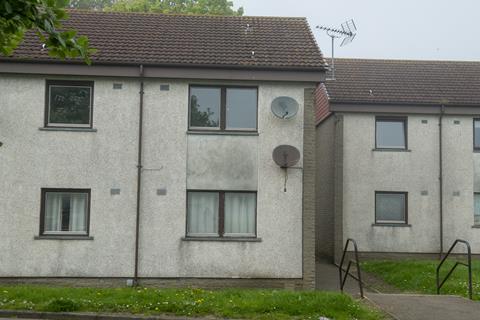Homes containing the lightweight concrete will be demolished and rebuilt at a cost of £130m
Councillors at Aberdeen City Council have approved recommendations to demolish and rebuild 504 homes that contain reinforced autoclaved aerated concrete (RAAC) in their roof panels.

Council officers recommended the demolition following independent survey work, a detailed options appraisal, and extensive community engagement.
In the Balnagask area of Torry in Aberdeen, an estimated 366 council and 138 private addresses have RAAC in their roof panels.
The expected cost to demolish and rebuild the homes is £130m or more and will take between five and 15 years. The demolition alone is projected to cost between £20m and £25m.
The council also considered other options, including installing a support timber frame beneath the existing RAAC roof panels, removing and replacing the RAAC panels, or simply demolishing the homes.
>> See also:
>> See also:
The report presented to full council yesterday notes that demolishing the homes would “remove the stock altogether which would impact on Housing Revenue Account income and having stock to meet housing demand.”
The council will aim to purchase the private properties by voluntary agreement to facilitate their demolition.
The council has said owners will be offered market value for their homes along with reasonable legal costs, and home loss and disturbance payments.
RAAC was predominantly used in public sector buildings constructed between the 1950s and 1990s, including schools, hospitals, police stations and social housing.
Concerns about the safety of RAAC began to emerge in the 1980s when buildings constructed in the 50s started to show signs of failure due to the material’s estimated 30-year lifespan.
In 2018, the ceiling of a primary school in Gravesend, Kent that was built using RAAC collapsed. RAAC concerns re-emerged in September last year, when it was identified in hundreds of schools and at NHS hospital sites, leading to these buildings being closed.
Councillor Miranda Radley, convener of the communities, housing and public protection committee, said: “This is one of the hardest decisions the Council has taken. We recognise the impact this will have on residents, many having lived in their home for many years.”
She added that the priority has to be residents’ safety: “The welfare of people is what matters most, and we will continue to offer individuals and families one-to-one support whilst meeting their housing needs as far as possible from existing stock.”
Radley said the council will also explore providing “a mix of new homes for the longer term” and said it will work with the local community and potential partners in developing the regeneration plans.
Re-homed council tenants will be given first refusal on a replacement home matching their need..
Private owners and tenants will receive the same rehoming support as council tenants.
The UK and Scottish governments will be informed about the preferred option to demolish and rebuild the homes and the financial implications for both the council and private owners.
The council has said it plans to request a meeting with both governments to discuss funding support for both the immediate costs and long-term housing development needs.


























No comments yet